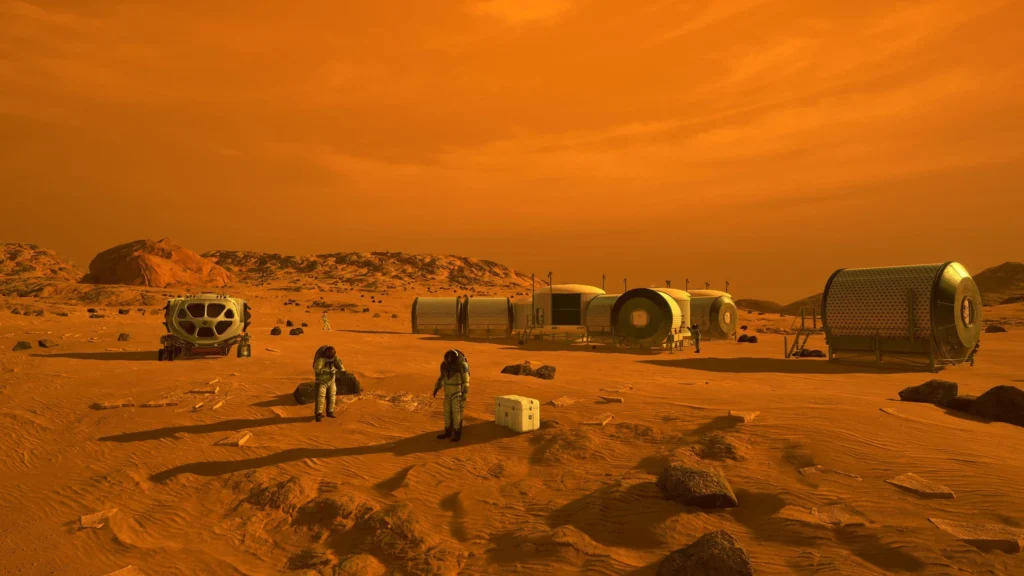
The dream of establishing human habitation on Mars has evolved from the realm of science fiction into a promising objective driven by pioneering organizations like SpaceX and NASA. This commentary explores the most recent developments, challenges, and future possibilities of interplanetary travel and potential colonization.
SpaceX’s Vision for Mars Colonization
Under the dynamic leadership of Elon Musk, SpaceX has laid out an audacious plan to create a self-sustaining colony on Mars. At the heart of this vision is the development of the Starship spacecraft and the Super Heavy rocket, a revolutionary, fully reusable transportation system designed to facilitate not just one-time trips but regular cargo and crew missions to the Red Planet. By utilizing on-orbit refueling and tapping into Martian resources for fuel production, this ambitious model aims to pave the way for permanent settlement.
Musk is known for his bold timelines, with ambitions to launch an uncrewed mission to Mars as early as 2026 and potentially send crewed missions by 2029. However, it is essential to note that these timelines hinge on critical technological advancements and regulatory green lights. The complexities of space exploration require an incredibly meticulous and meticulous approach, and there is a collective recognition that timelines may shift as challenges arise.
NASA’s Mars Exploration Initiatives
NASA stands at the forefront of Mars exploration, making substantial progress through robotic missions and human exploration preparatory efforts. By January 2025, the Perseverance rover had already traversed over 20 miles on Martian terrain, collecting 26 samples of rock, soil, and dust. These samples are not merely incidental; they are pivotal in unlocking the geological history of Mars and assessing its past habitability—a crucial factor in determining whether Mars could support human life.
Moreover, NASA is actively investing in Earth-based simulated Mars habitats that prepare astronauts for the unique challenges of Martian life. These analog studies are not simply an exercise in imagination but foundational for technology development, providing essential insights into the physical and psychological demands of long-duration space missions. This preparation will be vital as we venture deeper into the cosmos.
Technological and Logistical Challenges
While the potential for human settlement on Mars ignites excitement, numerous pressing challenges loom.
- Transportation and Entry: The development of reliable spacecraft that can safely transport humans to Mars while ensuring smooth entry, descent, and landing on the Martian surface remains a technical hurdle that must be overcome.
- Life Support Systems: Crafting sustainable life support systems capable of providing air, water, and food for extended periods is paramount. Innovative approaches, such as growing mushrooms in space to enrich astronauts’ diets, exemplify the creative thinking required for extended missions.
- Radiation Exposure: Mars presents significant radiation risks due to the absence of a global magnetic field, exposing its surface to higher levels of cosmic radiation. Formulating effective shielding strategies is essential to protecting astronauts from potential health hazards.
- Resource Utilization: The ability to utilize Martian resources—such as extracting water from subsurface ice and creating fuel from the atmosphere—will be vital for achieving sustainability and reducing dependence on supplies from Earth.
Ethical and Legal Considerations
The prospect of colonizing Mars inevitably raises ethical and legal quandaries that cannot be ignored. The Outer Space Treaty of 1967, which many spacefaring nations have signed, establishes that celestial bodies are the “province of all mankind,” explicitly prohibiting national appropriation. As exploration efforts continue to advance, it is crucial to ensure that they remain aligned with international laws and ethical considerations. The responsibility to respect Martian territory and its potential ecosystems weighs heavily on humanity’s conscience.
International Collaborations and Future Missions
International collaboration is also blossoming in the quest to explore Mars. The United Kingdom has announced plans to develop the Rosalind Franklin rover, whose mission is to drill into Martian soil in search of signs of past life. Set for launch in 2028, with a landing projected for 2030, this mission underscores the global commitment to understanding our neighboring planet and the unified effort necessary for successful exploration.
Conclusion
While significant strides have been made toward making human life on Mars a tangible reality, considerable challenges remain. The road ahead necessitates continuous technological advancements, robust international cooperation, and comprehensive planning to navigate the complexities of interplanetary travel and colonization. As SpaceX, NASA, and other pioneering organizations stretch the frontiers of exploration, the long-held dream of living on Mars transitions closer to an achievable reality. However, as we reach for the stars, we must remain ever-conscious of our responsibilities to both the destination and the broader cosmos.



